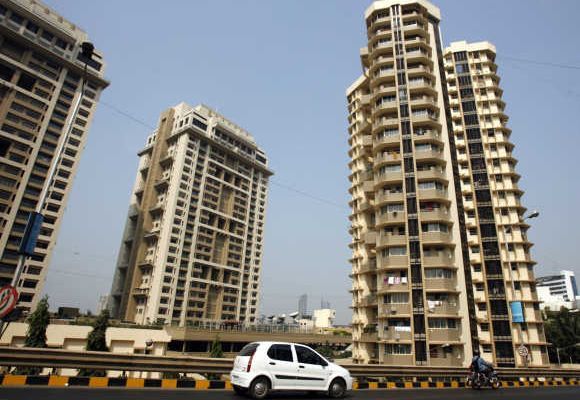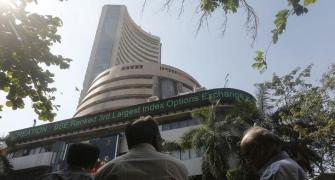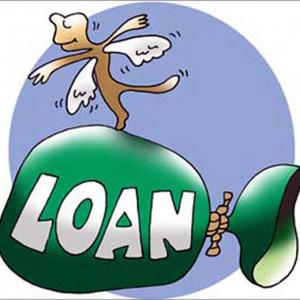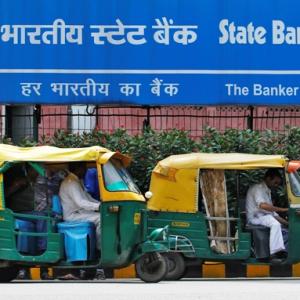The entire 'teaser rate' phenomenon only ended up benefiting lenders and developers at the cost of the loan consumers, notes Harsh Roongta.
 Home loan at eight per cent? When the home loan rates are hovering at 9.75 per cent, this would sound like a consumer-friendly proposition.
Home loan at eight per cent? When the home loan rates are hovering at 9.75 per cent, this would sound like a consumer-friendly proposition.
In a seemingly pro-consumer move, The State Bank of India (SBI) chairperson recently requested the Reserve Bank of India (RBI) governor to provide a one-time relaxation to allow SBI to lend below its base rate of 9.7 per cent.
She alluded to the fact the earlier, 'teaser rate' loans in 2009 helped restart the home loan market, which had been badly affected by the financial crisis of 2008.
Let's cut to that tumultuous period in late 2008 and 2009. The real estate market was badly affected by the sub-prime financial crisis and was sitting on huge quantities of unsold stock.
Home loan interest rates were around 9.75 per cent. The insecurity of job losses, combined with high unaffordable real estate rates and high home loan rates, had led to drying of actual user demand for residential properties.
Investors in properties were sitting on unsellable properties. In this market, SBI came out with a 'teaser rate' product, where the home loan consumers paid eight per cent interest in the first year and nine per cent in the second and third year before reverting to the 'regular' floating rates after the third year.
The equated monthly instalments (EMIs) were low for the first three years and then increased from the fourth year. This reduction in upfront EMIs combined with a significant price cut by the developers led to a surge in demand for residential property (and home loans to fund them).
The other major players cried foul about the 'teaser rate' scheme, arguing it could lead to a credit crisis as consumers would not be able to cope up with an increase in EMIs after the third year and that it would lead to a spate of bad loans.
They were forced to offer similar schemes to remain competitive in the market but that did not stop them from lobbying the regulator to ban the scheme on grounds of the chances of these loans going bad which, in turn, would affect the entire banking system.
These schemes were effectively banned by RBI by prescribing very stiff provisioning norms for the teaser period.
But the teaser rate loans did succeed in increasing demand for real estate and leading the real estate sector out of the slump caused by the financial crisis.
The fears about consumers defaulting when interest rates went up in the fourth year were proven to be unfounded, as around five years have passed now since the last teaser rate loan was written and the home loan sector currently has one of the lowest rates (less than one per cent) of overdue accounts.
Clearly, home loan consumers lapped up the scheme and the home loan and real estate sectors benefited from the increase in business.
So, it would seem the SBI chairperson was right in asking that teaser rate loans be allowed again to provide a kick-start to the real estate sector as well as home loan lenders.
There is one big issue with that request, though. Consumers who took the teaser rate loans in 2009 and 2010 and have blindly continued their loans with SBI are now paying an interest rate of anywhere from 11.70 per cent to 12.95 per cent depending on the month in which the loan was disbursed and the loan amount.
This is against the 9.75 per cent SBI charges to its current home loan consumers. The situation is similar for loan consumers of other major lenders who also offered teaser rates at that time.
So in the ultimate analysis, the entire 'teaser rate' phenomenon only ended up benefiting lenders and developers at the cost of the loan consumers.
All home loan lenders have made quite a lot of money on the earlier teaser rate loans and, hence, it won't be a surprise if other lenders support the re-introduction of teaser rate loans this time instead of opposing it.
Fortunately, RBI does not seem to be in any mood to allow banks to lend below base rates, if the recent draft guidelines on calculation of base rate on marginal cost basis is considered an indicator.
RBI might have its own reasons for being unlikely to agree to sub-base rate lending, but it is for consumers to understand that the so-called cheap 'teaser rate' home loans can prove to be very expensive in the long run.
The writer is a registered investment advisor.










